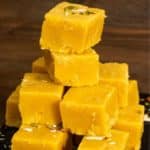Mysore Pak is an Indian sweet prepared with besan (gram flour) cooked in a mixture of sugar and ghee. A melt-in-the-mouth delicacy, this sweet treat is very popular especially during the festival of Diwali. Make it at home with this easy-to-follow recipe!
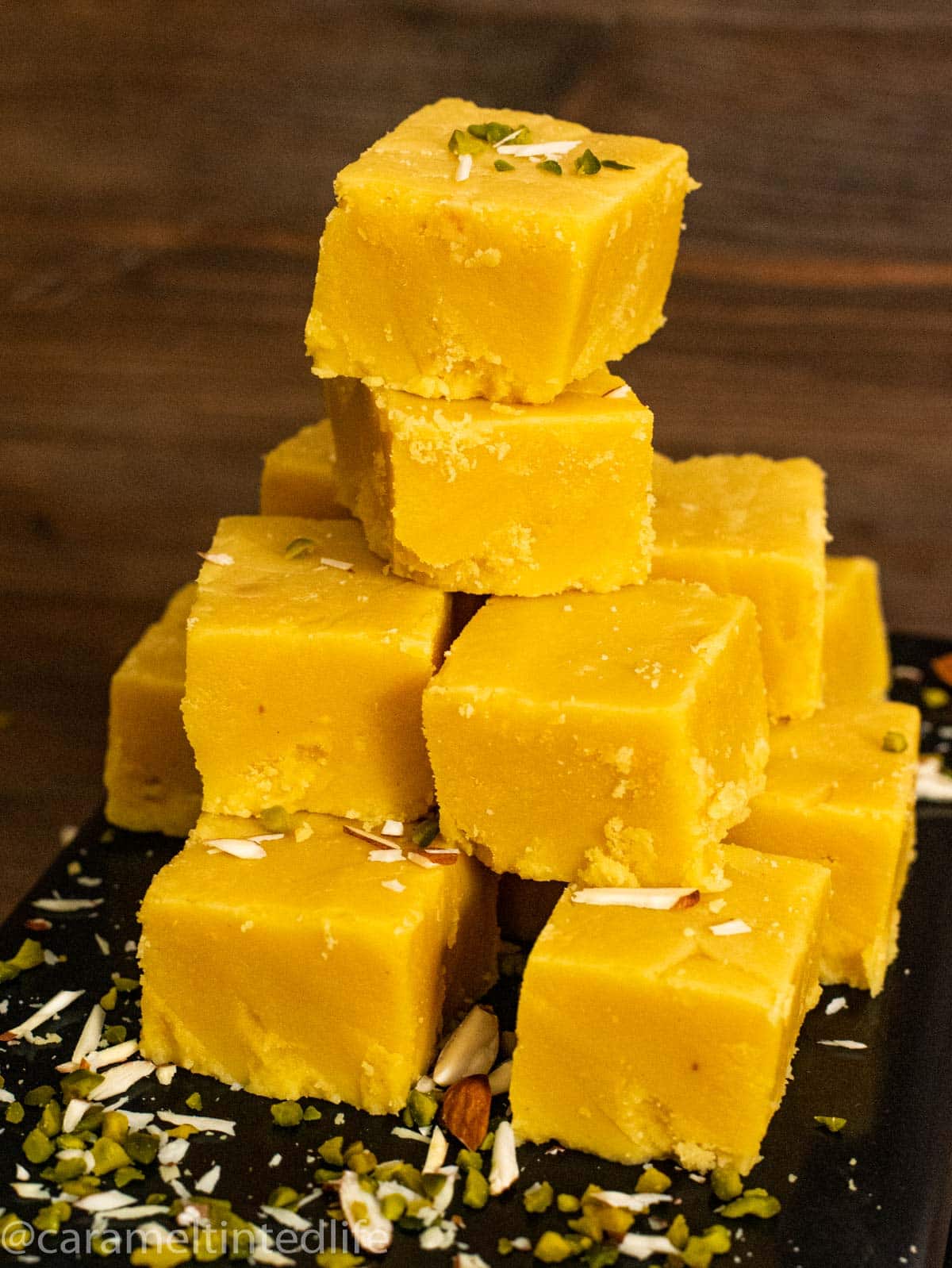
Jump to:
Mysore Pak is one of those sweets I can never resist, the rich ghee-infused goodness of this melt-in-in-the-mouth dessert is incomparable to any other sweet. Do not compromise on the amount of ghee or sugar that goes into the recipe. Eat it without guilt, and enjoy the festive season!
The famous Mysore Pak comes in two versions:
- The semi-hard, textured version that is sold in most sweet shops. It has a crumbly, almost honey-comb-like texture
- The soft version that has been made famous by Sri Krishna Sweets (also known as Mysorpa). This version one is soft and creamy, with a glossy look to it.
My version is somewhere between the two - it is melt-in-your mouth, buttery, yet firm, and slightly crumbly. Most importantly, it is all-round delicious!
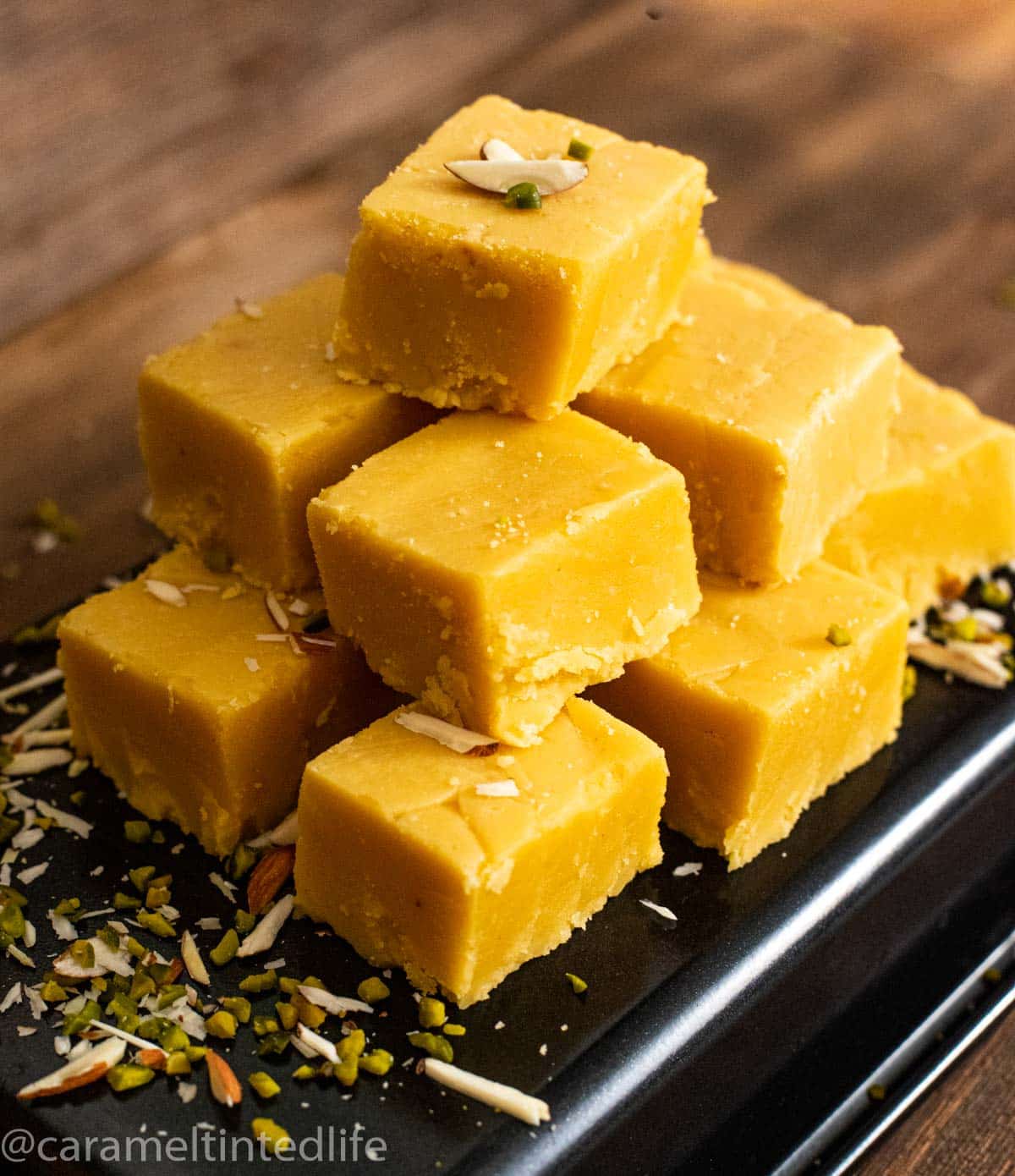
Ingredients & Equipment Needed to Make This Recipe
Ingredients for Mysore Pak
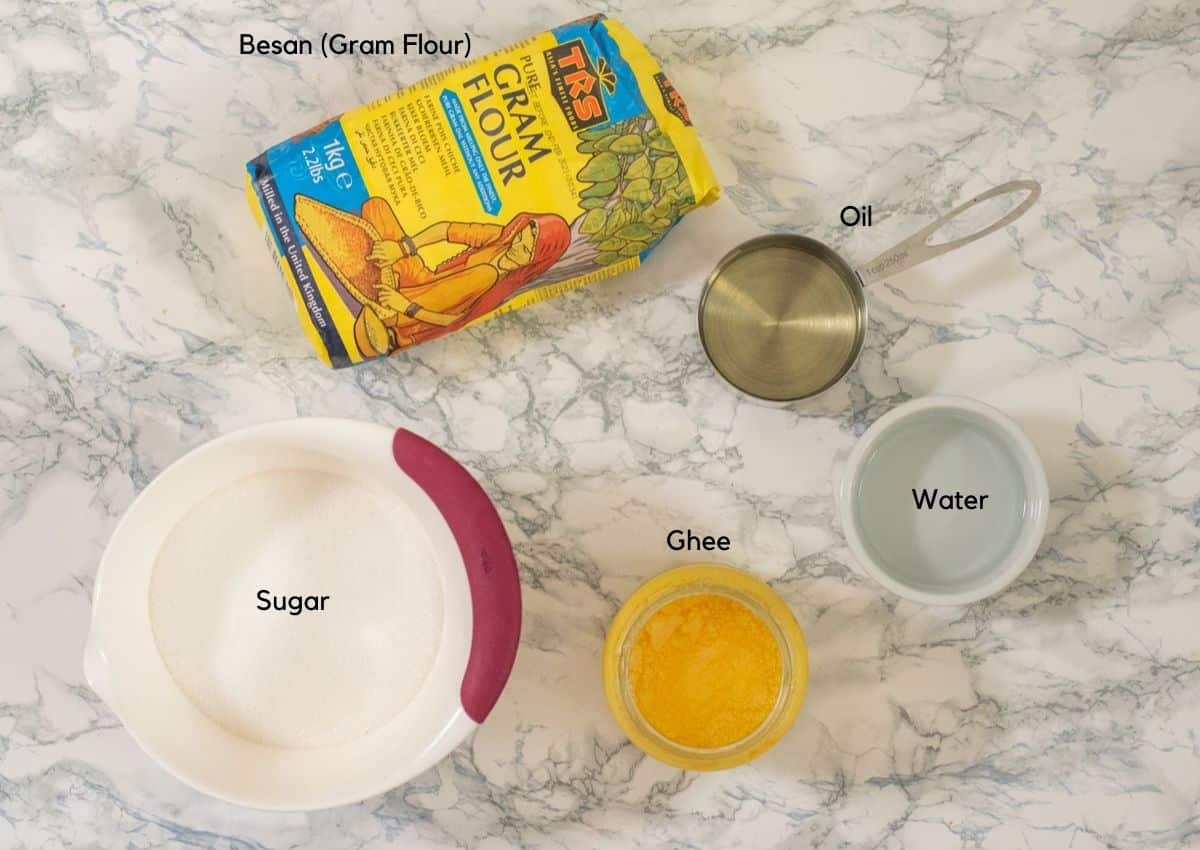
Gram Flour - Gram Flour (aka, Besan) is commonly available in all Indian and Asian grocers. It is gluten-free and very commonly used in a lot of Indian cooking, such as Vegetable Pakoras and Paneer Tikkas. Note that Gram flour is not the same as Chickpea Flour. Chickpea Flour is made from garbanzo beans or chickpeas and Gram Flour is made from split gram (Bengal gram).
Oil and Ghee - Mysore Pak can be made from either all-ghee or a mixture of oil and ghee. In this recipe, we use both oil and ghee. Make sure you are using good quality oil and ghee (I used Sunflower oil and homemade ghee).
Equipment Needed
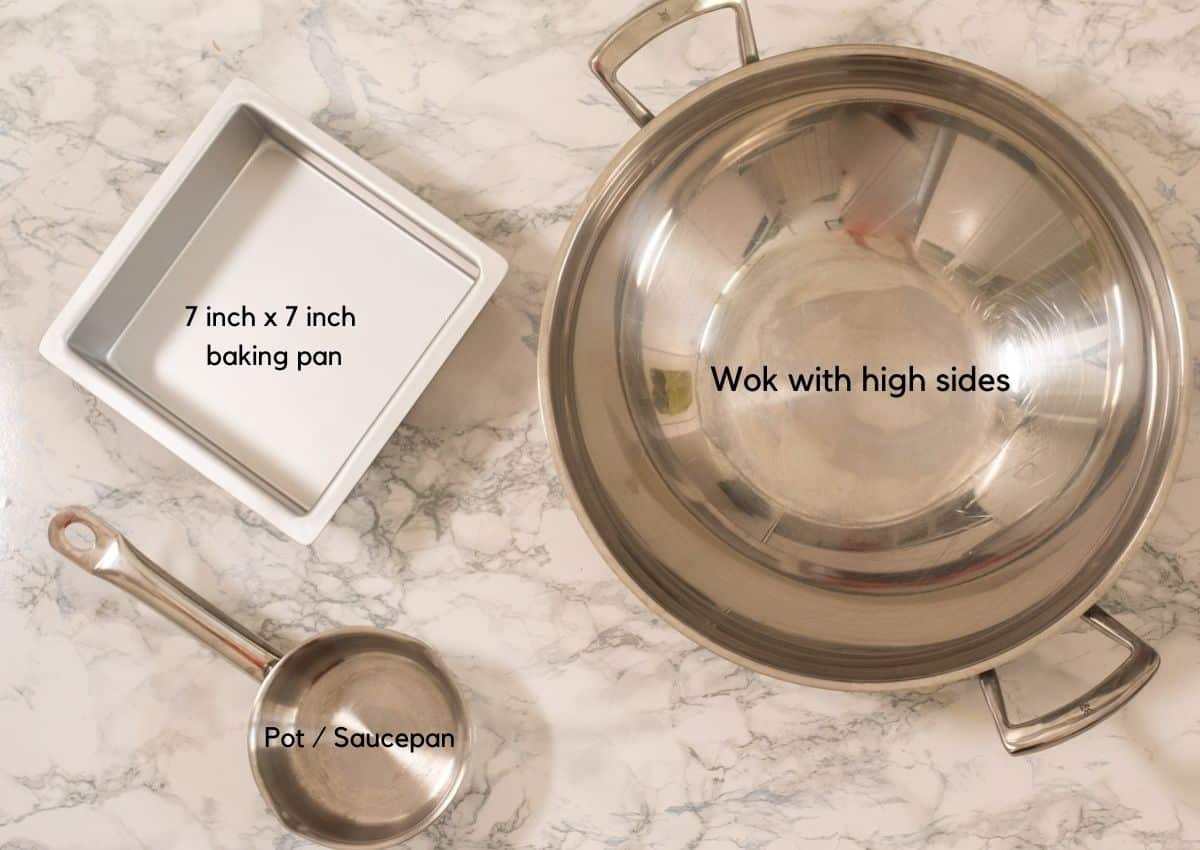
Wok - Use a wok with a heavy bottom and high sides. The heavy bottom will help prevent the gram flour from burning at the bottom and the high sides will ensure that you are able to move the mixture around easily in the wok. This is especially important as the mixture is extremely hot and needed to be stirred constantly.
Saucepan - A small saucepan with the ghee and oil will be kept on medium heat next to the wok all through the process, as we will need to keep pouring the ghee-oil mixture into the wok at regular intervals.
Baking tin - Keep a lightly greased baking tin prepped and handy to pour out the mixture once it is done. The mixture will cool and set in this baking tin.
Step-by-Step Instructions
Start by sieving the gram flour (besan) into a bowl. Sieving it will ensure there are no lumps formed in the recipe.
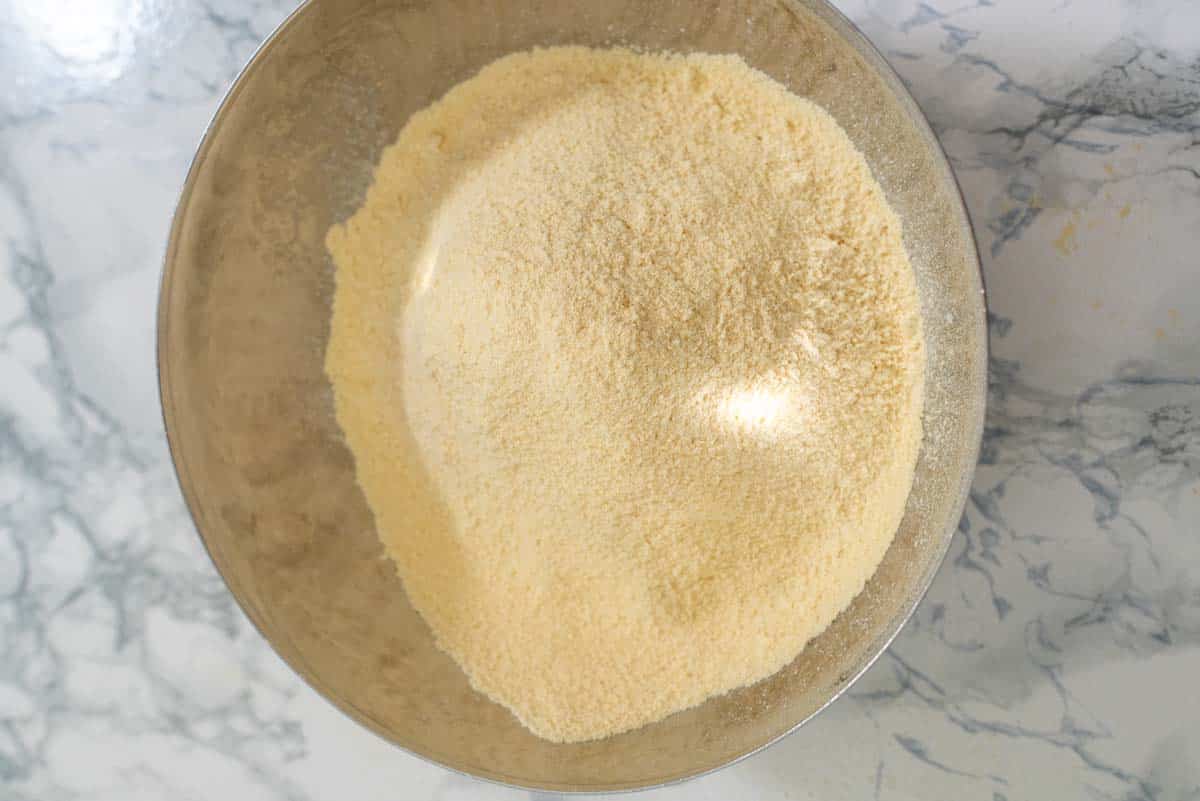
On the stovetop, keep your wok and saucepan ready. Add the sugar and water to the wok, and heat it on medium to high heat, stirring occasionally with a spatula.
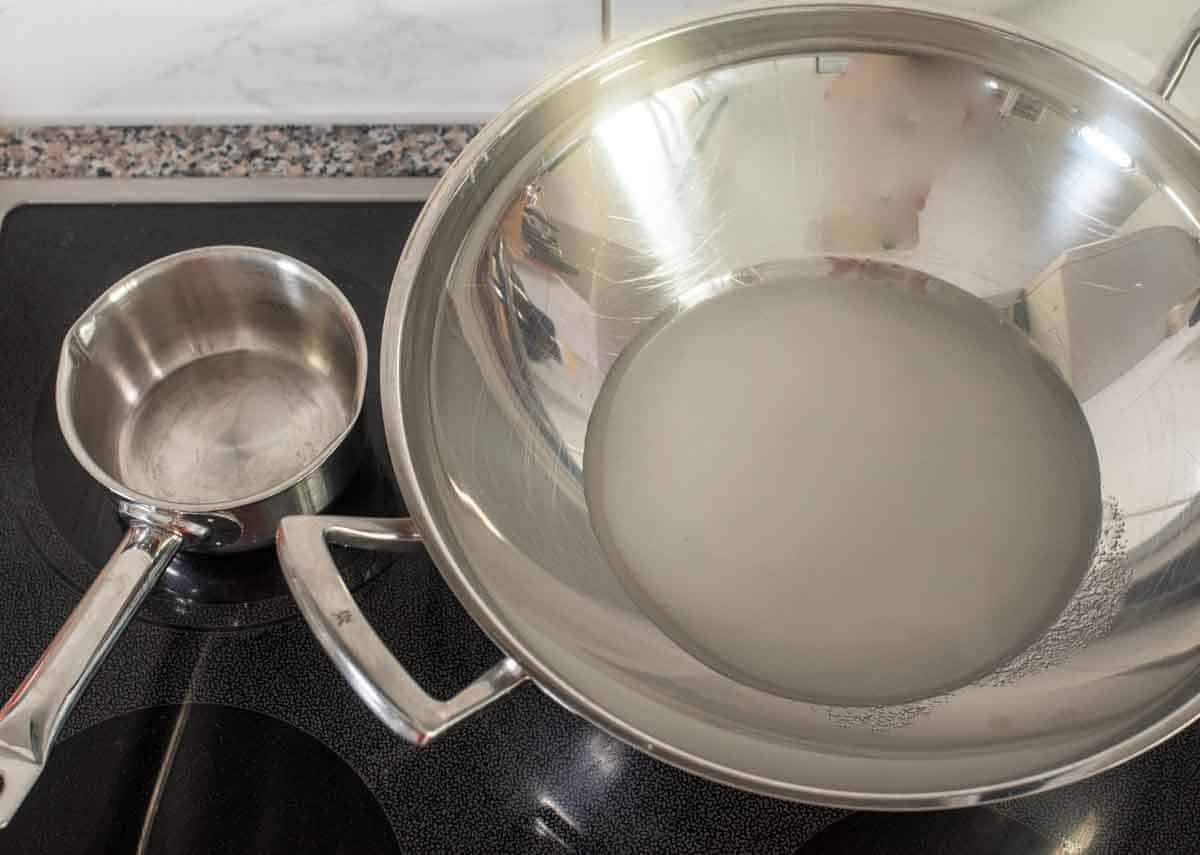
Once the sugar syrup is bubbling and has thickened and formed a 1-string consistency, reduce the heat to medium. In the saucepan, add the ghee and oil, and heat it on low-medium heat. The saucepan should remain on low to medium heat as we continue with the rest of the steps.
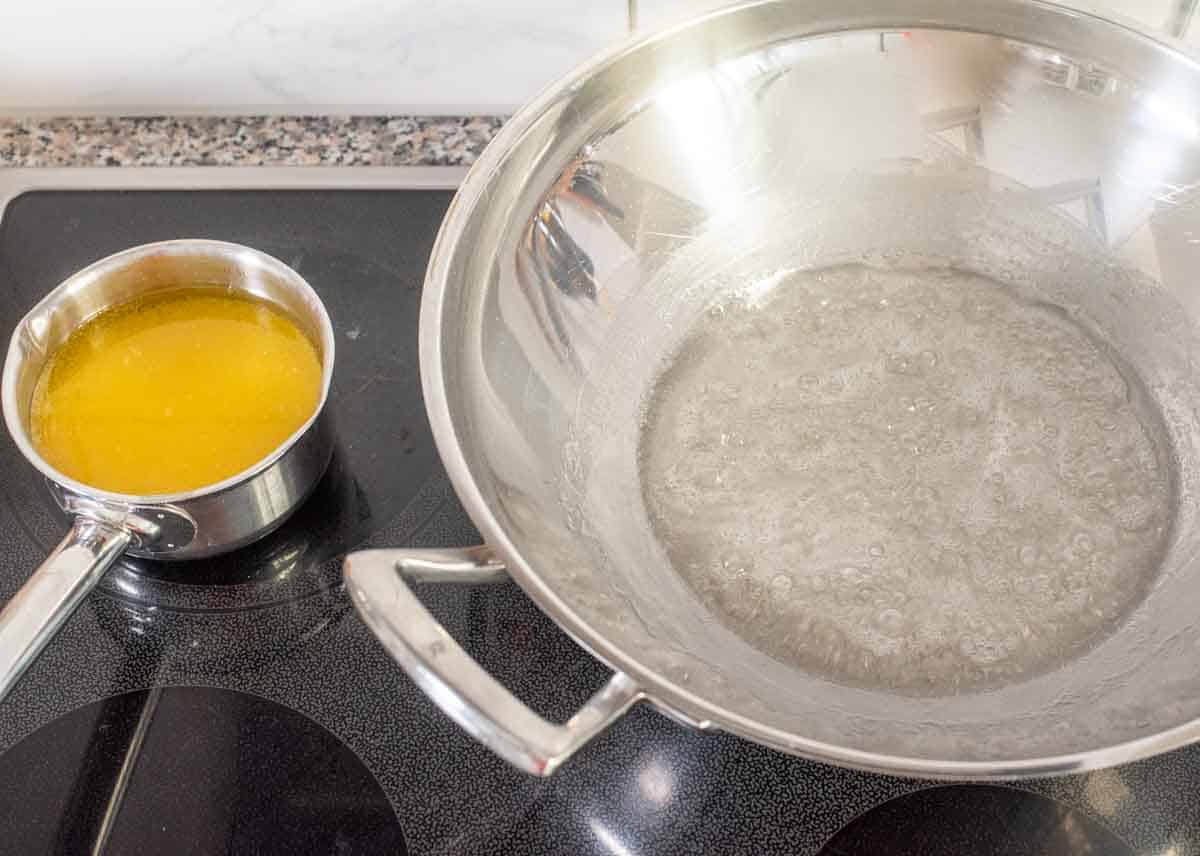
Add the sieved gram flour to the sugar syrup, slowly, and use a whisk to combine the sugar syrup with the gram flour.
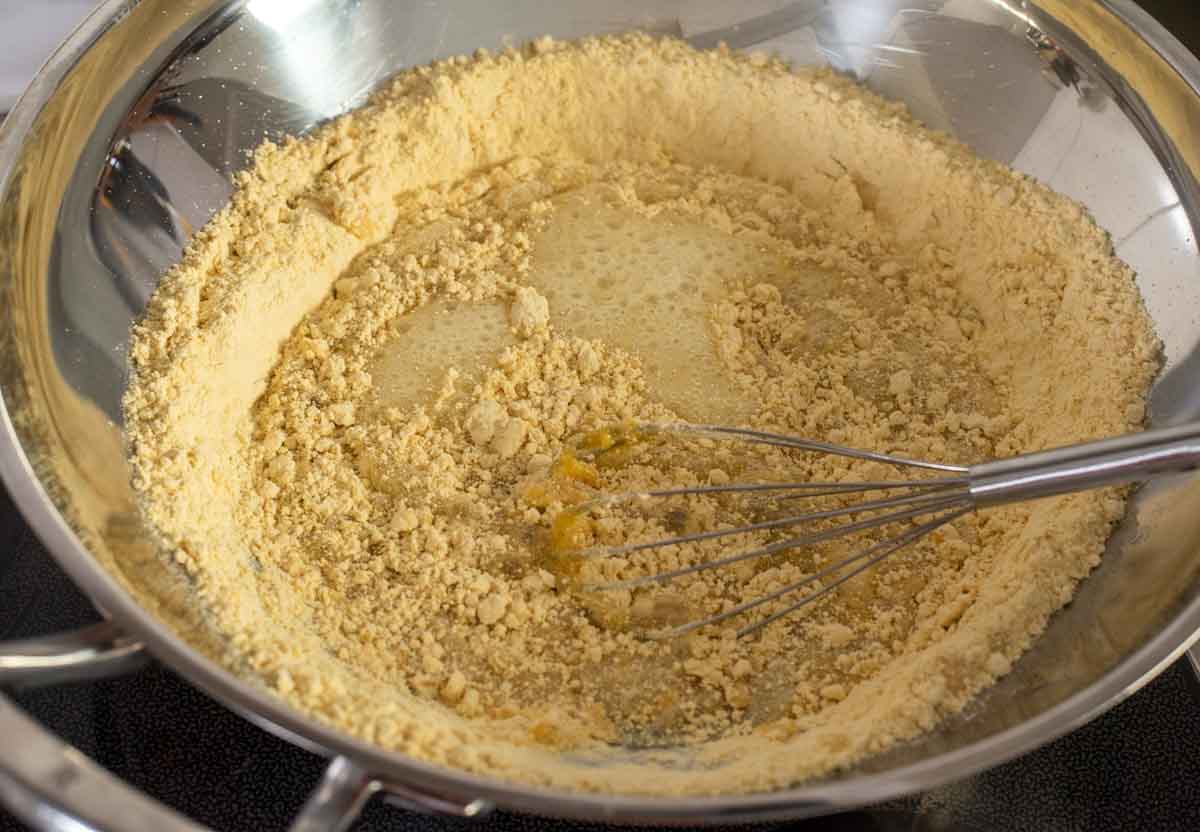
As you whisk, you will see the gram flour forms a smooth paste-like mixture as seen below. Once all the gram flour is dissolved in the sugar syrup, and looks smooth, we can start adding the ghee-oil mixture a little at a time.
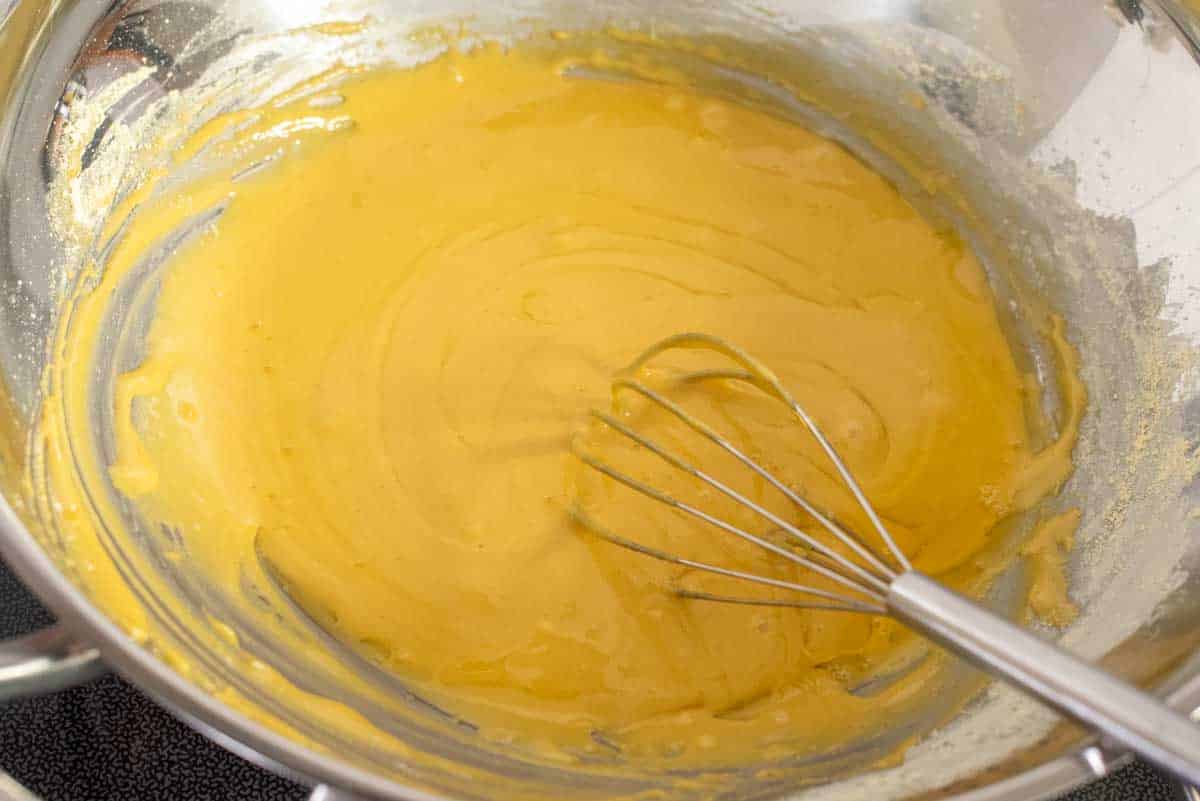
Use a ladle to scoop up a little of the hot ghee-oil mixture and add it slowly to the wok. I use my left hand to do this and in my right hand, I keep my whisk ready for the wok.
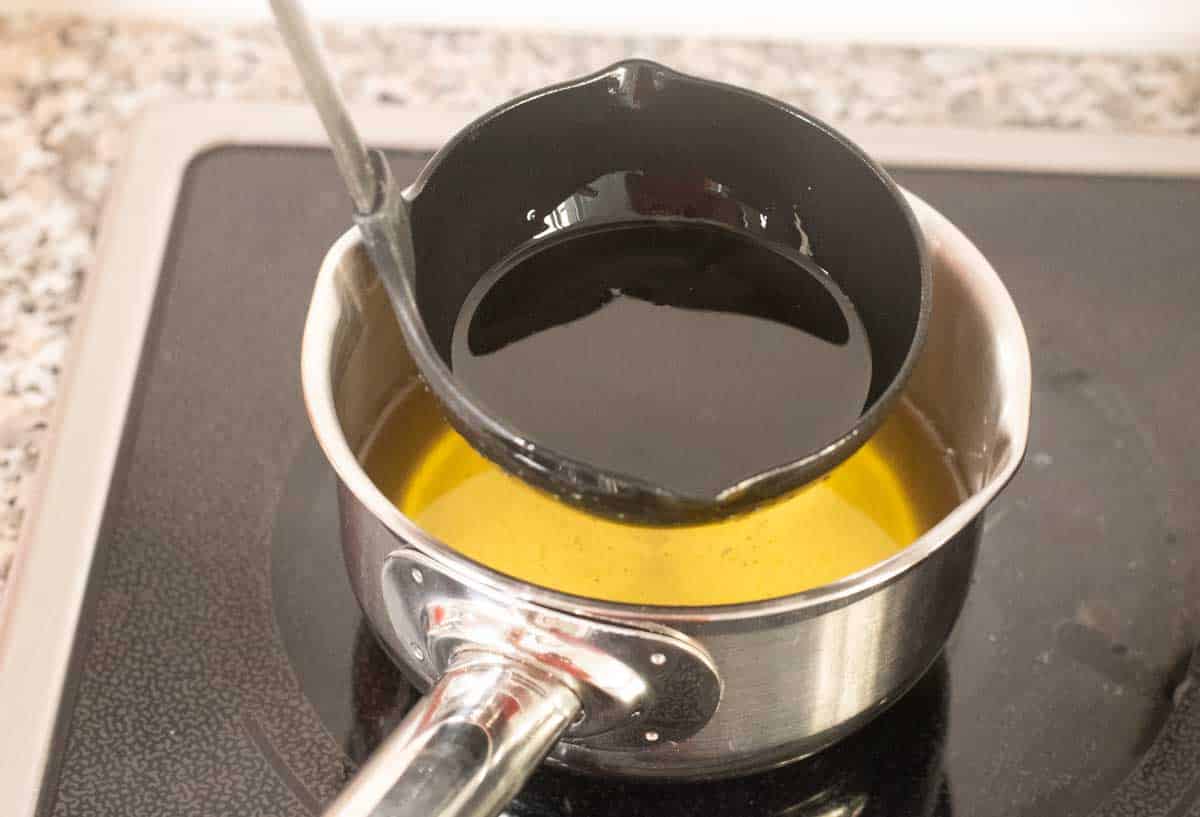
Add the hot ghee-oil mixture into the wok and immediately whisk it into the gram-flour -sugar syrup mixture.
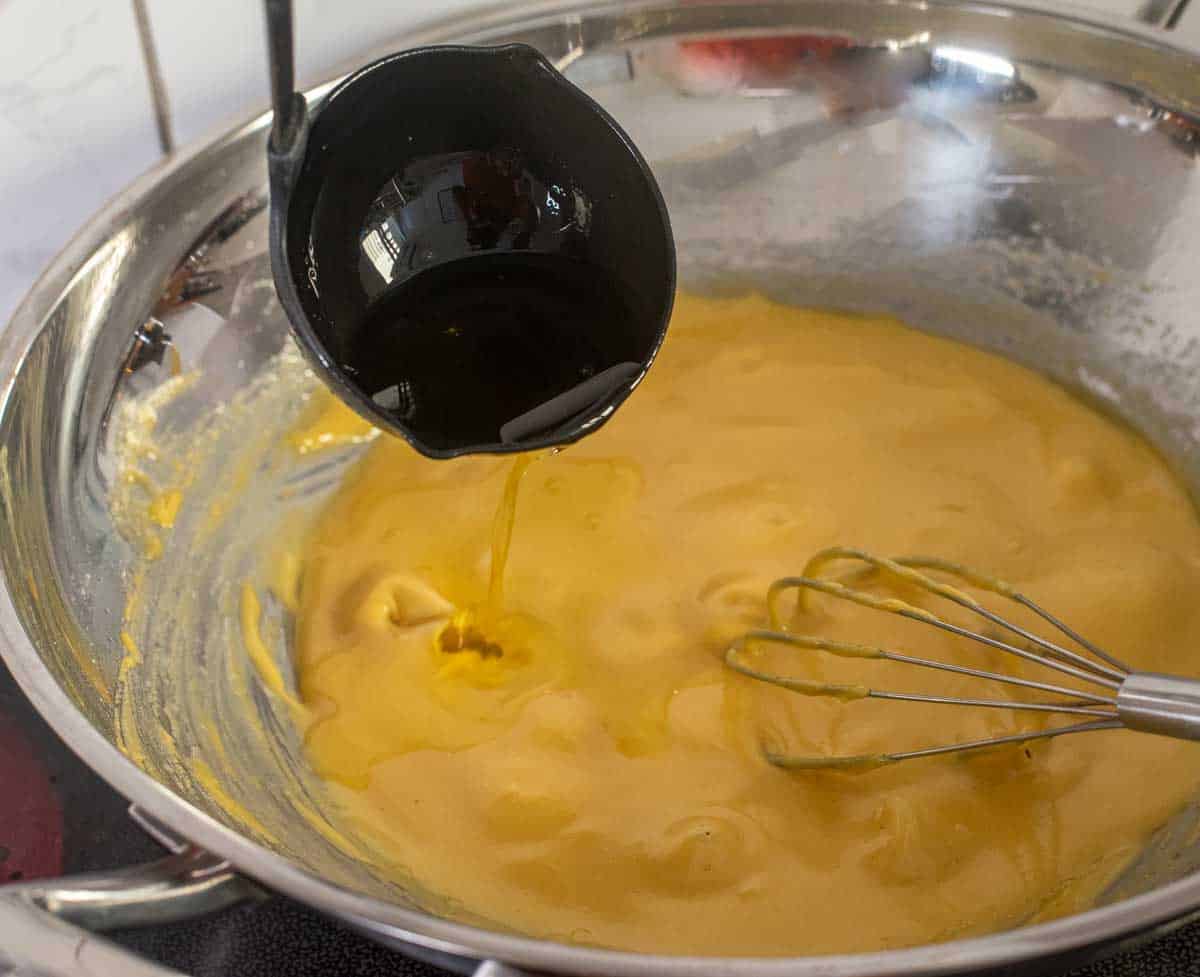
Continue whisking until the mixture absorbs all the ghee and oil and looks smooth as you can see below.
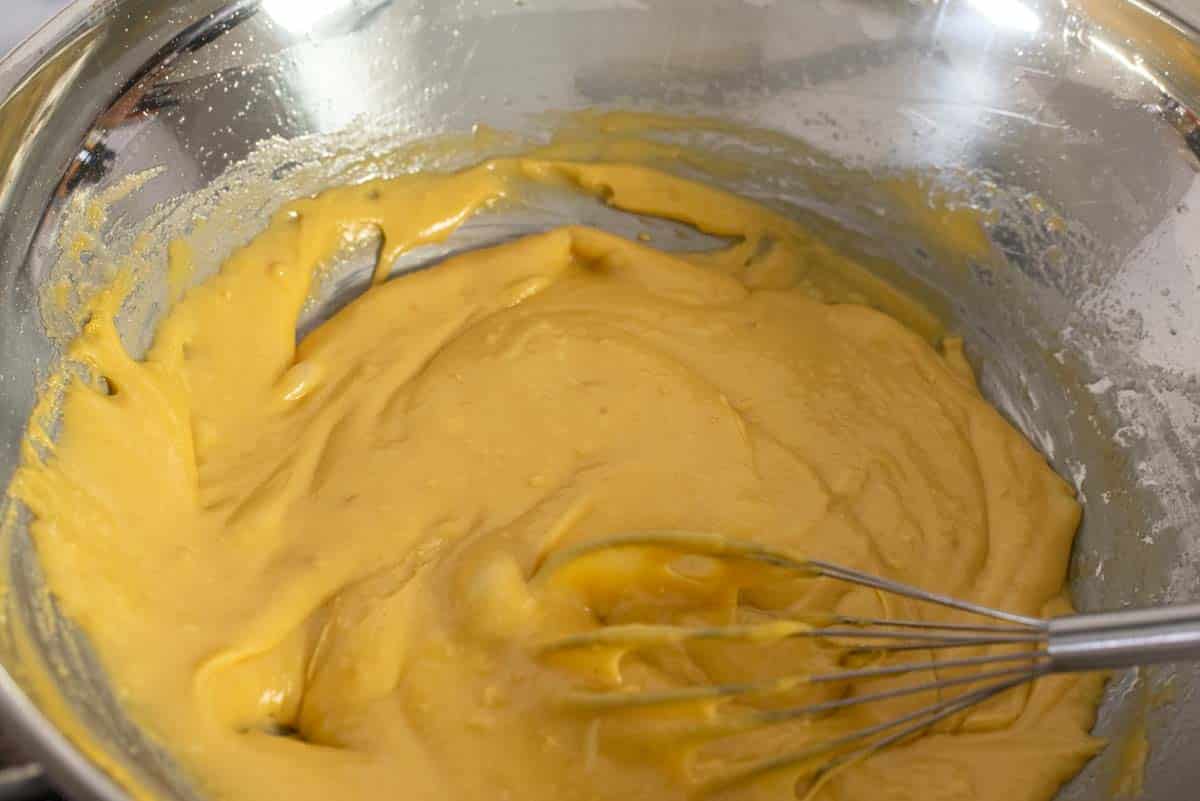
Continue adding the ghee-oil mixture to the wok in 5-6 increments, and follow the same steps as above. After 20 minutes of mixing, the mixture should become a thick mass and start to separate from the sides of the wok like you see below.
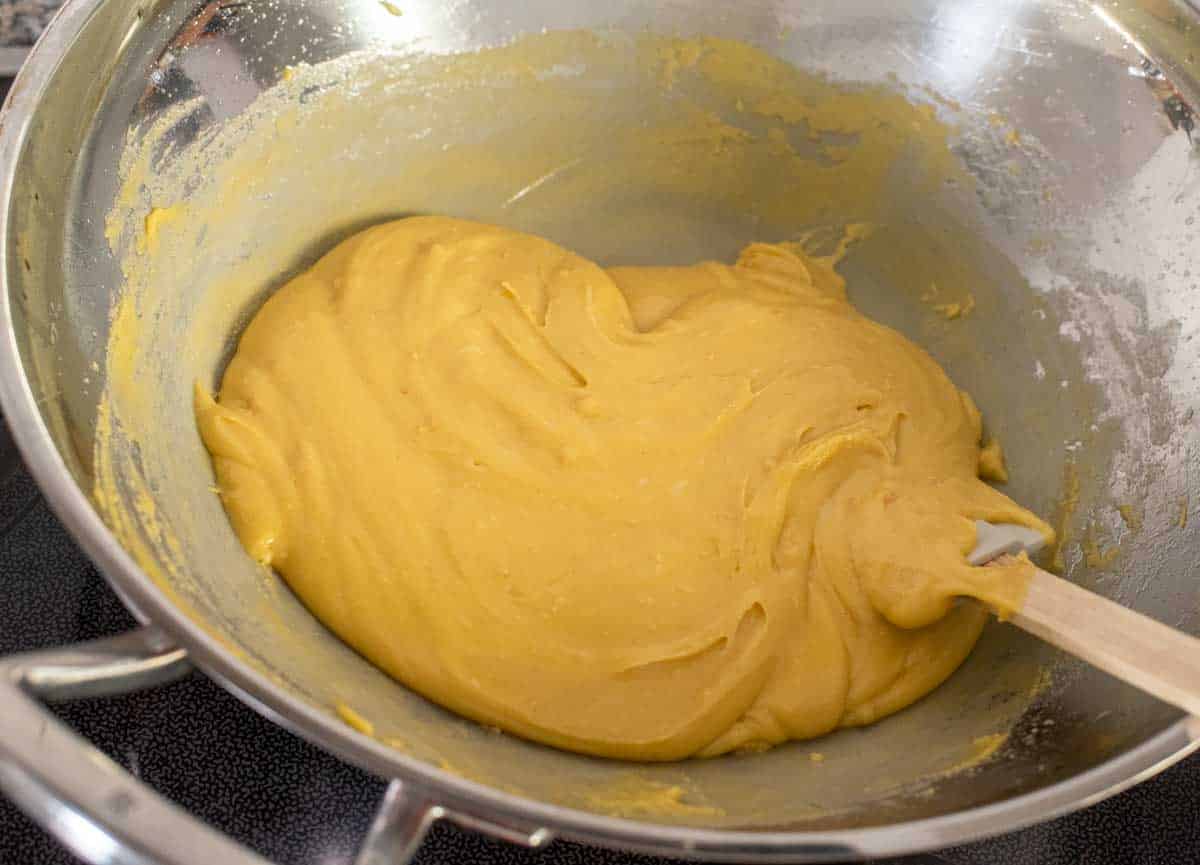
Add one last ladle of ghee+oil, and you will see the mixture frothing as below. At this stage, the mixture is ready to be poured out.
Pro tip: If you want to make semi-hard Mysore Pak which has a grainy, porous texture, you can continue cooking the mixture for 5-6 minutes more, until you see the mixture bubbling and seizing. The bubbles will cause aeration and give the Mysore Pak a textured look, similar to sweetshops.
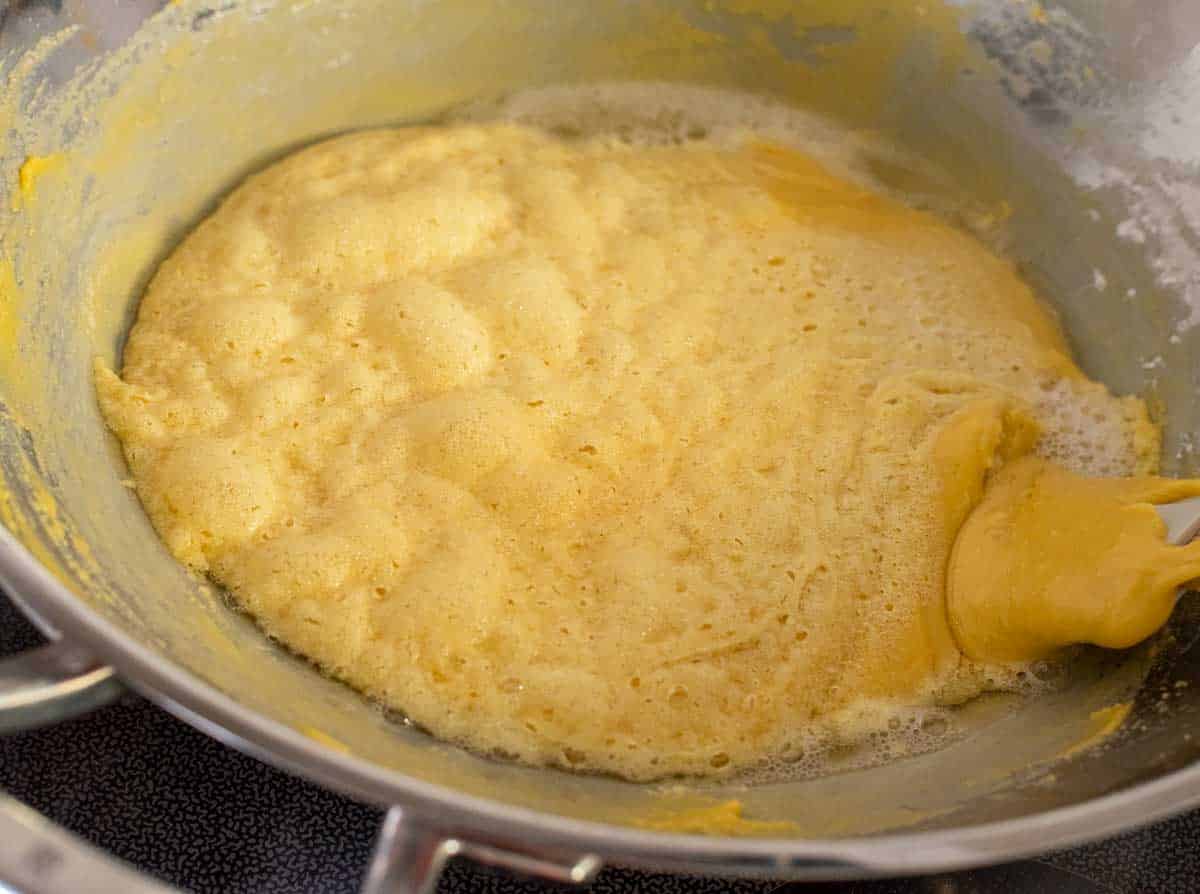
Use a spatula to pour out the batter into the baking tin. Keep the tin at room temperature to cool for 1-2 hours.
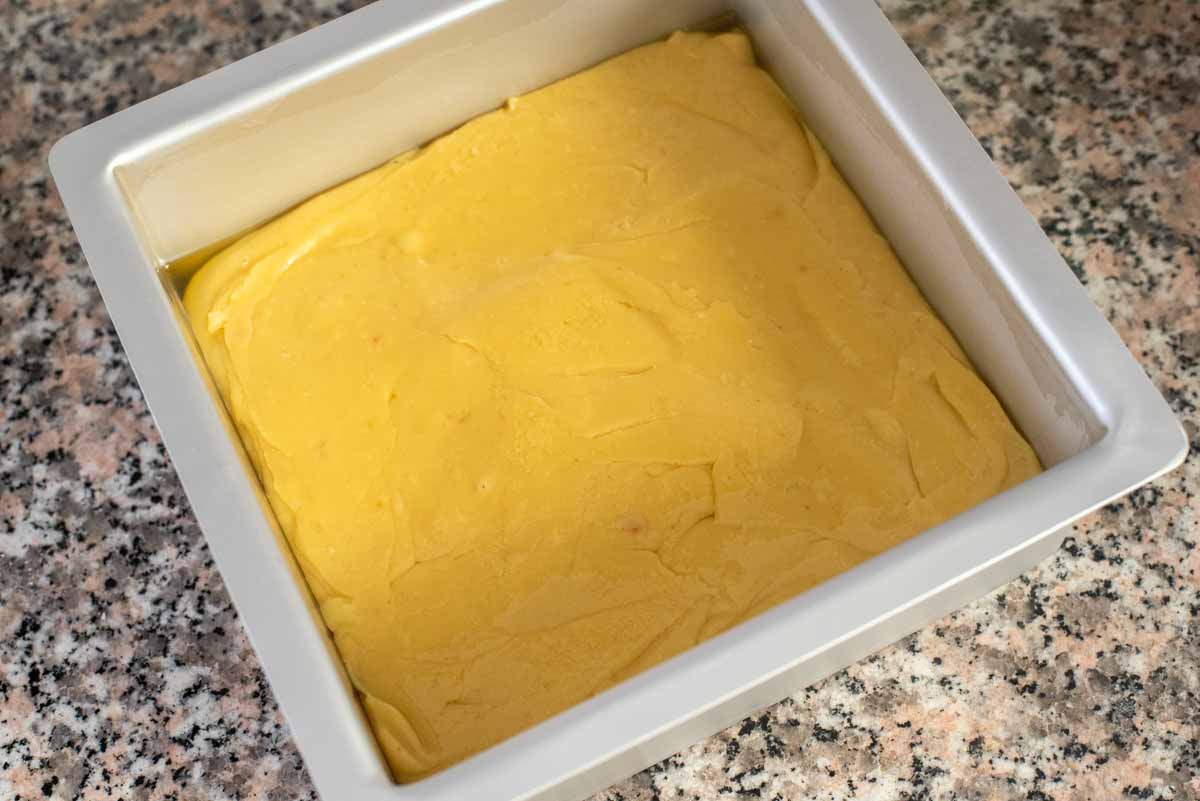
Once the Mysore Pak is cooled down and feels firm to touch, it is ready to be cut. Use a sharp knife to cut out squares of Mysore Pak.
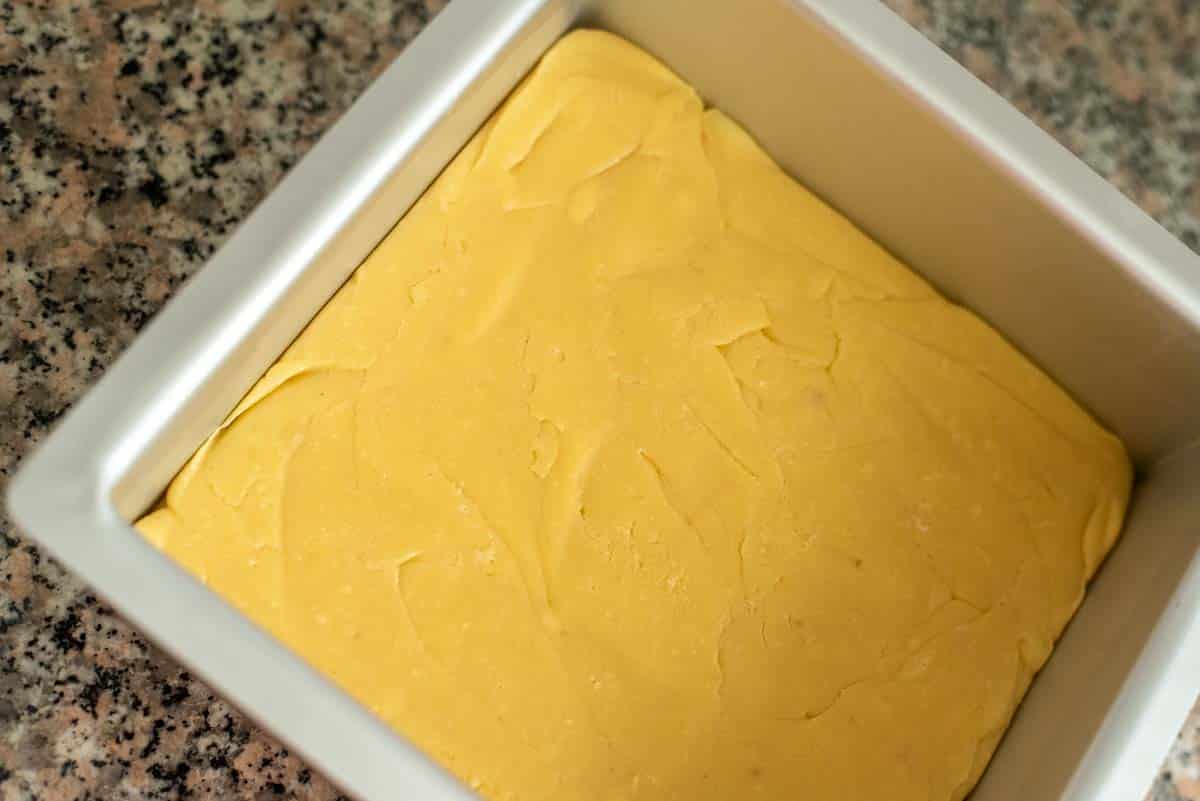
Expert Tips
- Sift the gram flour before cooking, to get rid of any lumps
- Use a wok (kadai) with high sides to ensure that the hot mixture does not spill over the sides
- Make the sugar syrup with the right consistency - the sugar syrup, commonly known as chashni, is used to make gulab jamuns, jalebis, etc. Cook the sugar syrup on medium heat until it reduces slightly. Take a little syrup between your thumb and forefinger (be careful, the syrup is quite hot). Stretch fingers gently - the syrup should form a single thread-like strand. This consistency is important for the correct texture for a Mysore Pak
- For a softer Mysore Pak (similar to the Sri Krishna Sweets version) - Keep the heat in the wok at medium-low and do not overcook the mixture, take it out of the wok one it starts to come together like a mass (see images in recipe instructions above).
- For a harder, crumblier Mysore Pak - If you are looking for a Mysore Pak with air pockets and a honeycomb-like texture (like the original Mysore Pak), simply continue cooking the mixture for a few minutes more until it starts to froth and bubble up. As soon as the mixture starts to seize up, transfer it into the pan. Just ensure you do not overcook the mixture at this stage, else it will result in Mysore Pak that is too hard.
- Do not speed up the process: Cooking the mixture for a longer time on medium heat will ensure that the raw smell of besan goes away. The entire process from creating the sugar syrup to when the mixture is ready takes 40 minutes. If you take the mixture off the heat earlier, it will be undercooked with a slight smell of raw gram flour.
- Oil can be replaced with the same quantity of ghee for a richer, more buttery version of Mysore Pak.
FAQs
Mysore Pak can easily go from firm to rock hard - to avoid this, make sure you take off the mixture from the heat at the correct stage. For Soft Mysore Pak, take it off the heat when the mixture forms a mass and just begins to froth. Let it overcook beyond this stage and it runs the risk of hardening.
Mysore Pak is shelf-stable and can sit in an airtight container for up to a couple of weeks at room temperature. You can store it in the fridge as well, to keep it for longer.
Sugar syrup should be of the right consistency when making sweets. This consistency check can be done by taking a little syrup between your thumb and forefinger and stretching them gently. A single thread consistency is when a single thread is formed (and does not break) when your forefinger and thumb are pulled apart slowly. The two-thread consistency is created when two threads are formed.
The name says it all! Mysore is a city in the state of Karnataka (India), a former seat of the royal family. Mysore Pak has a lovely little story - the legend goes that the royal cook of the king of Mysore made this dessert under duress when he was asked to prepare a special sweet for the king. The king liked it so much that he gave it the name Mysore Pak!
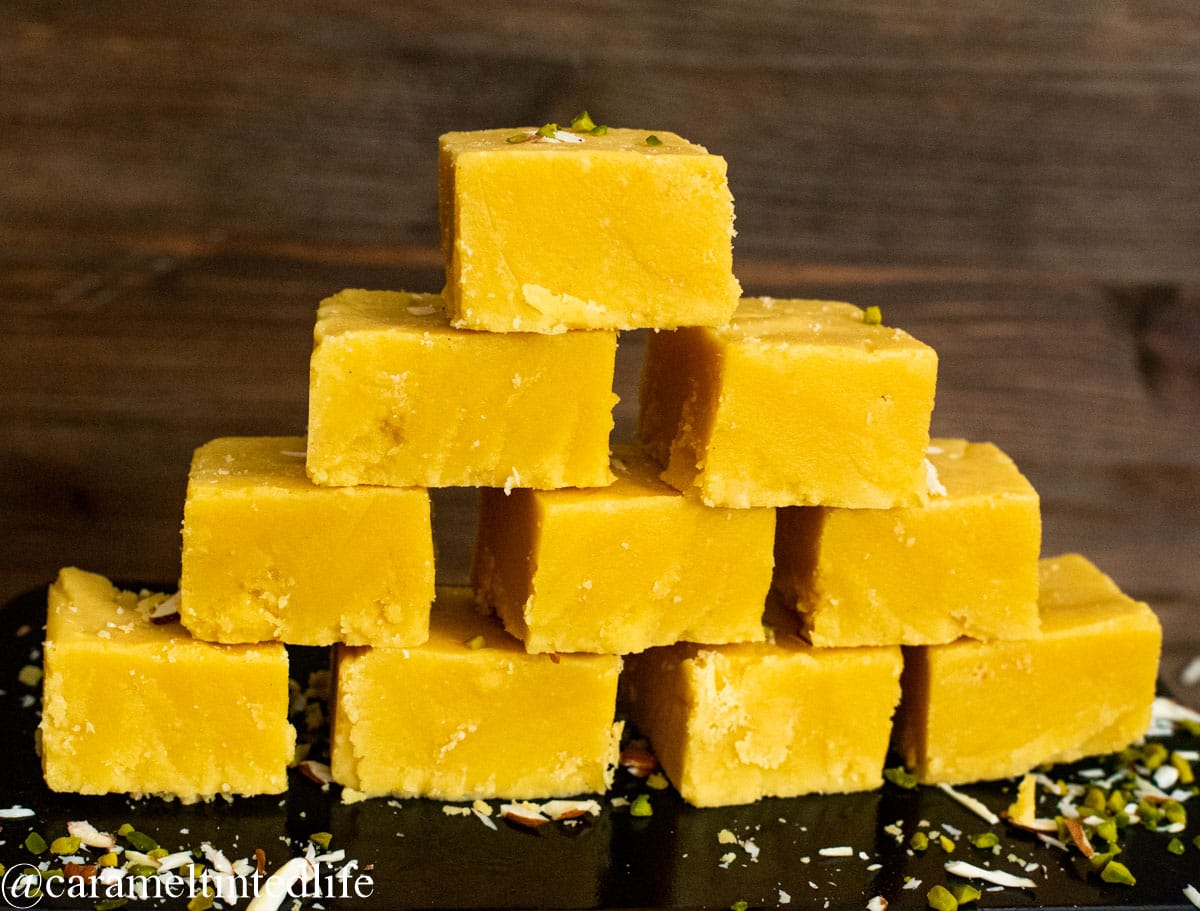
More Indian Desserts to Try
Have you checked out our Diwali sweets collection? There's plenty for you to pick from - from the classic Badam Peda (Almond Fudge) to Rose Kalakand (Milk Cake), to Kheer (Indian Rice Pudding) to Gajar Halwa (Carrot Fudge).
You can also take a look at our fusion desserts such as Diwali Dessert Jars - three layers of sweets layered in a jar, or our 3-ingredient Coconut Ladoos that take only 15 minutes to make.
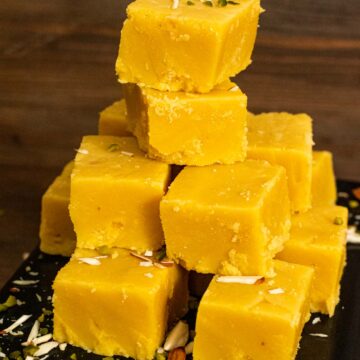
Mysore Pak Recipe
Equipment
- Wok
- Saucepan
- Whisk
- Ladle
- Spatula
Ingredients
- 2.5 cups gram flour (besan)
- 2 cups sugar
- 1.25 cups ghee
- ¾ cup oil
- ¾ cup water
Instructions
- Sieve the besan (gram flour) using a fine mesh sieve to ensure no lumps are formed. Keep aside for later.
- On the stovetop, keep your wok and saucepan on adjacent stoves.
- Add the sugar and water to the wok, and heat it on medium to high heat, stirring occasionally with a spatula. Stir ocassionally until the syrup has thickened and reduced. Sugar will start to crystalize and stick to the sides. Check for 1- string consistency (see notes), and lower the heat.
- In the saucepan, add the ghee and oil and keep it on a medium heat. The saucepan should remain on heat as we continue with the rest of the steps.
- Add the sieved gram flour to the sugar syrup, slowly. Use a whisk to combine the sugar syrup with the gram flour. The gram flour will absorb all the sugar syrup in a couple of minutes.
- Once the gram flour mixture looks like a smooth runny paste, scoop out a little of the ghee+oil mixture and add it to the gram flour mixture in the wok.
- Immediately whisk the hot ghee + oil and combine it into the gram-flour -sugar syrup mixture. The mixture will absorb the fat and turns smooth.
- Continue adding the ghee-oil mixture to the wok in 4-5 increments, and follow the same steps as above.
- After 18-20 minutes of mixing, the mixture should become a thick mass and start to separate from the sides of the wok.
- Add once last ladle of ghee+oil and as soon as the mixture starts to bubble and froth, take the wok off the heat and turn it out into the prepared baking tin.
- Keep the tin at room temperature to cool for 1-2 hours.
- Once the Mysore Pak is cooled down and feels firm to touch, it is ready to be cut. Use a sharp knife to cut out squares of Mysore Pak.
Notes
- Use a wok (kadai) with high sides to ensure that the hot mixture does not spill over the sides
- To check for 1-string consistency of the sugar syrup, take a little syrup in a spoon, let it cool. Take it between your thumb and forefinger. Stretch fingers gently - the syrup should form a single thread-like strand.
- If you want to make semi-hard Mysore Pak which has a grainy, porous texture, you can continue cooking the mixture for 5-6 minutes more, until you see the mixture bubbling and seizing. The bubbles will cause aeration and give the Mysore Pak a textured look, similar to sweetshops.
- Do not substitute gram flour with chickpea flour - gram flour is made from brown Bengal gram and chickpea flour is made from white chickpeas.


